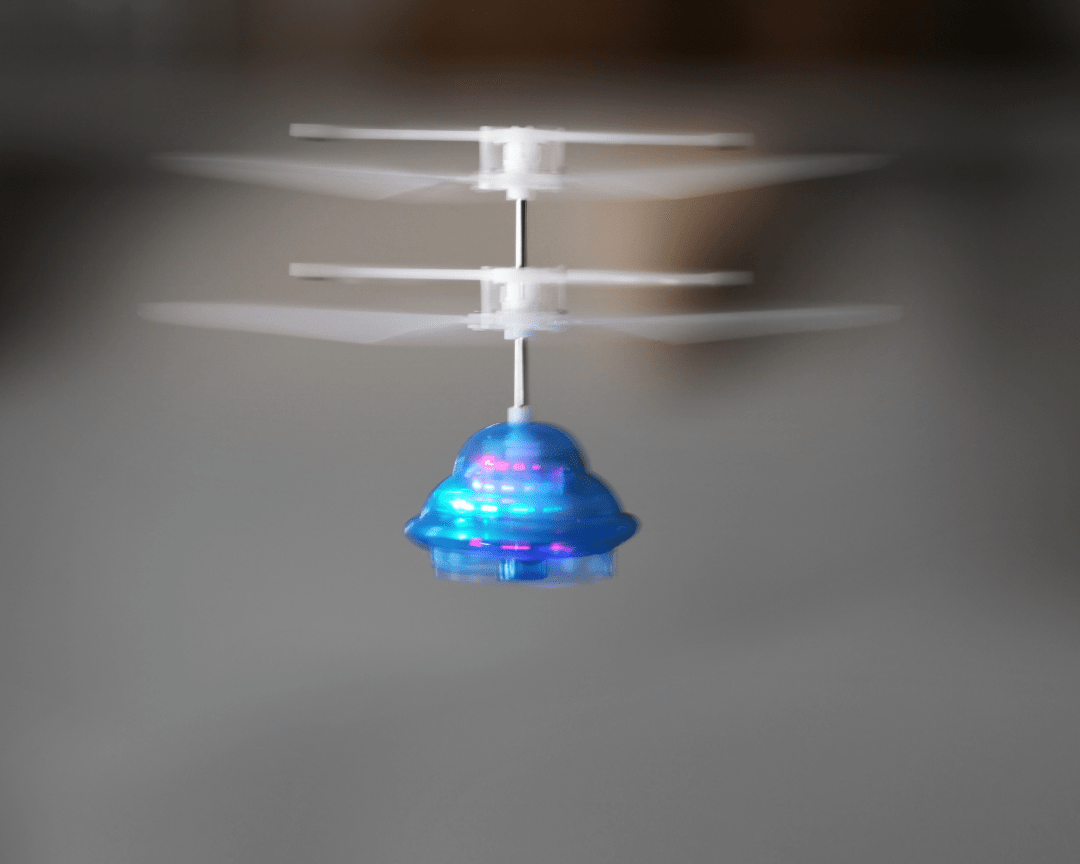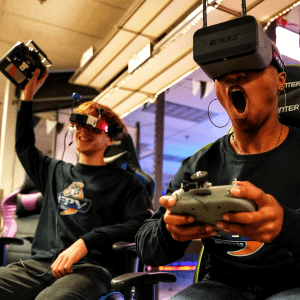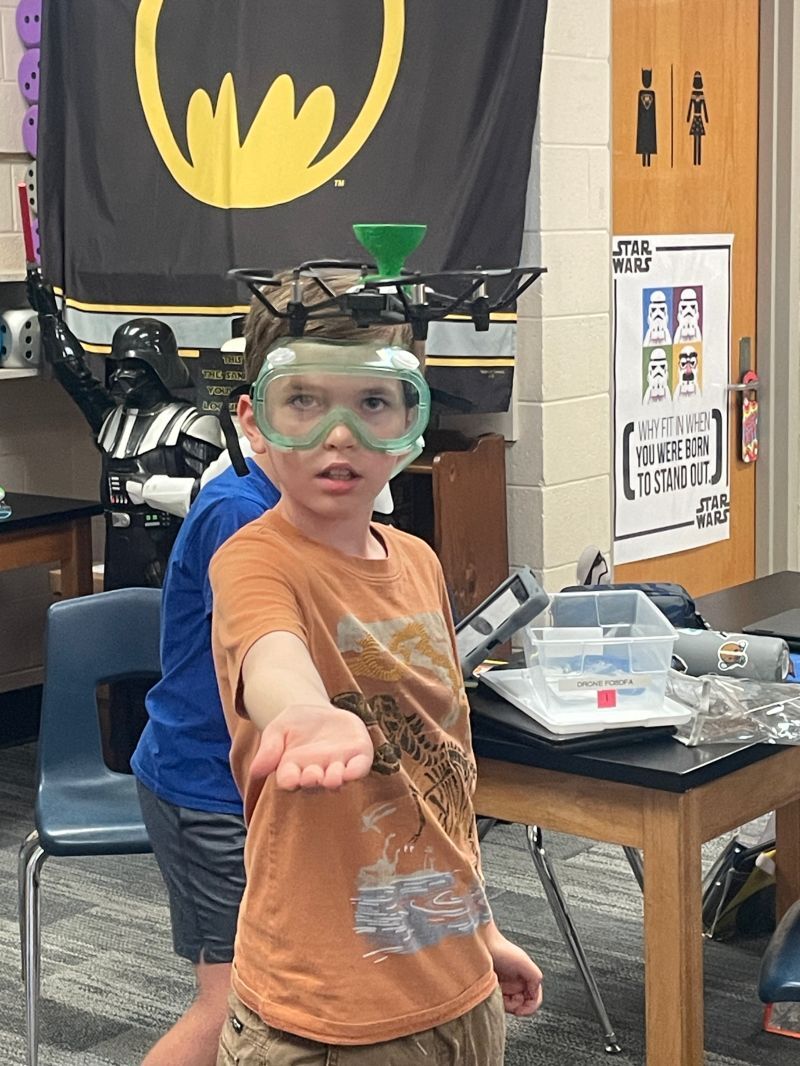Drones come in so many shapes and sizes, there is always more to learn. While the Drone Legends curriculum makes use of the incredible Tello — a lightweight drone that’s safe to use in the classroom or outdoors — we love learning all about the drone variations available to young Legends, like hand operated drones.
Keep reading to learn more about hand operated drones and how they work.
What are Hand Operated Drones?
Hand operated drones are physically controlled by the drone pilot’s hands, rather than with a remote control. Sensors embedded in the drone respond when obstructions are detected, prompting the drone to move in the opposite direction. If you held your hand to the right side of a hand operated drone, for example, the drone would move to its left, away from your hand.
Hand operated drones are typically built for young children and feature a webbed shell around any propellers or motors. This prevents injury and damage to your home.
Who Can Benefit From a Hand Operated Drone?
A hand operated drone can serve as an excellent introduction to the world of drones. With safety features that make them easy to use harm-free in the home, hand operated drones can be a great source of fun and excitement in situations like these:
- Families where younger children/siblings want to feel included if older siblings use a remote controlled drone
- Tight living quarters where remote controlled drones can be difficult to maneuver
- As a way to develop motor skills
- As an introduction for children who feel intimidated by remote controlled drones
- In situations where more than one person wants to participate in flying a single drone
Hand operated drones for young children are typically available in the $20-$40 price range, which makes them an excellent low-budget, introductory drone option.
Drones For STEM Education
Hand operated drones can help spark an initial interest in drones and STEM concepts like physics. Once young students are comfortable with the idea of controlling a flying object, they may be ready to move on to a slightly more advanced drone experience.
Drones are an excellent tool for teaching cross-disciplinary STEM skills. That’s precisely why we designed our standards-aligned drone curriculum for elementary school-aged children. When young Legends are exposed to STEM concepts from an early age, they are able to start building the foundational knowledge, skills, and confidence to pursue STEM interests or career paths later on. This is a huge deal, because STEM careers are the future.
Our drone curriculum combines concepts like data collection, math, engineering and coding. Students are presented with a problem that scientists face in the real world. Next, they are tasked with completing a mission (lesson) that can solve that problem using drone technology.
All drone lessons are teamwork-oriented and rely on clear communication, critical thinking, creative problem-solving, and social-emotional skills.
How Do Drones Teach STEM Concepts?
Our drone curriculum can be used in the classroom, as part of an after-school or holiday program, or at home. Drones are endlessly engaging, but what makes them so great at teaching kids about STEM? We’re glad you asked.
Here’s an overview of just a few essential skills students can learn through the magic of drones.
Spatial Awareness and Mechanics
Rather than an all-digital experience, remote controlled drones afford children the opportunity to hone their spatial awareness and gain an understanding of the mechanics that make their drones work.
Math Skills
As part of our program, students are required to take measurements and perform mathematical conversions to prepare flight path data. This creates a hands-on way for children to practice their math skills, while demonstrating how math is practically applied to solve problems in real-world scenarios.
Coding
Students gain an early understanding of coding when they are asked to translate their collected data into simple instructions to input as code. By thinking through their data and breaking a drone’s flight path down into actionable steps, kids learn how to communicate clearly and effectively — all while becoming familiar with the processes behind constructing coding prompts.
Remote Control Technology
From aeronautics to surgery, remote control technology is constantly being refined and used to solve complex problems. By familiarizing children with the concept and feel of performing remote controlled tasks, tomorrow’s pilots, doctors, and engineers can gain the confidence they’ll need to accomplish incredible feats with technology as an extension of their own bodies.
Collaboration and Communication
Our lessons ensure that each student takes on an active role to help solve their problematic mission. In some cases, students performing their duties as drone pilots are required to fly the drone while facing away from it, relying only on instructions from their peers. This fosters effective communication and encourages children to ask questions when directives aren’t clear to them.
Engineering Skills
As students are prompted to build objects or structures for their drones to navigate, they become familiar with the idea of building small-scale models that represent real-world structures, like volcanoes or buildings.
In addition to STEM “hard skills,” our program aims to teach students resilience. When a drone mission fails, students must go back and analyze their process to determine where things went wrong. From there, they are encouraged to make adjustments and try again. This sense of curious investigation, resilience, and perseverance is essential to succeed in STEM-based career fields.
Using Hand Operated Drones to Spark Interest in STEM
Hand operated drones can serve as a wonderful introduction to the magic of drones and the excitement of learning STEM concepts.
We believe that Inside Every Child Lives a Legend™. We also believe that drones have the power to unlock those Inner Legends so they can start flourishing today.
Once students are ready to move on to more complicated topics and refine their motor skills, remote controlled drones offer a highly effective way to teach children STEM concepts.
Learn more about Drone Legends here or connect with our team if you have any questions.
Don’t forget to follow us on Instagram and Twitter, or find expertly curated drone resources and teaching inspiration on our Pinterest.




